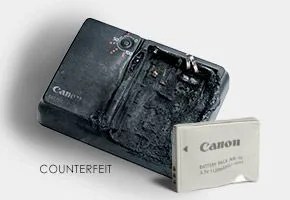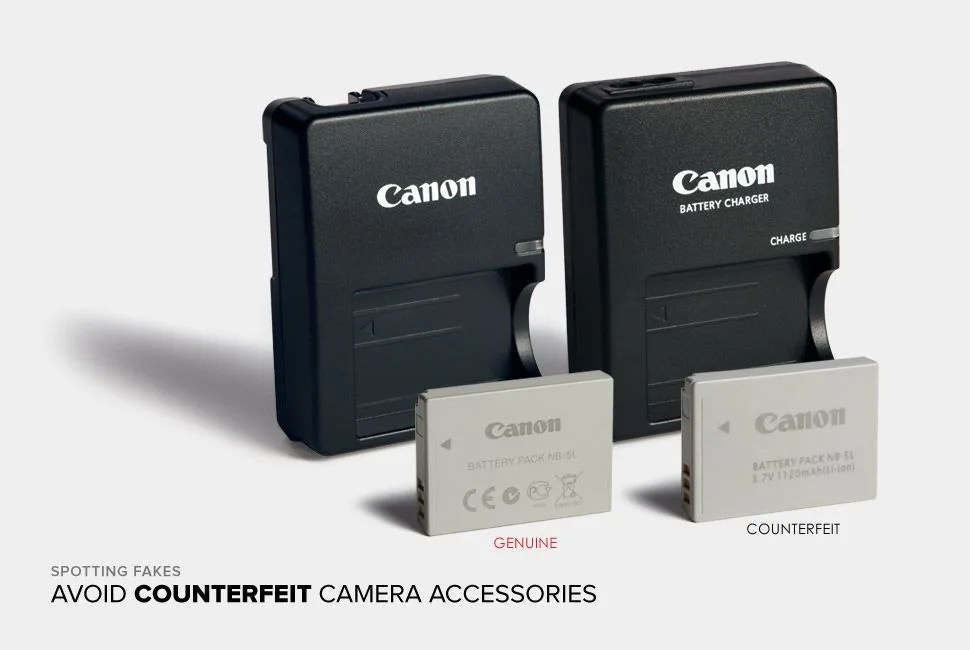There’s something infinitely gratifying about not paying full price for products and feeling as though you’ve cleverly haggled your way to financial gain. That’s why discount marketplaces are scoured by online shoppers like the digital bargain bins they are; it’s what keeps tourists in search of knockoff handbags. But handbags don’t start fires. See, while finding an incredible deal isn’t all that hard, making sure you actually purchase what you’d intended to can be another thing entirely.
Tips For Spotting Fakes

1. Purchase from authorized dealers or directly from the manufacturer.
2. Be careful when buying through foreign sites.
3. Beware of “too good to be true” prices.
4. Check to make sure the package is of high quality.
5. Beware of suspicious messaging.
6. Check to make sure your battery fits easily in your device.
7. Beware of overheating.
8. Make sure your battery holds a charge.
9. Compare logos.
10. When in doubt, let Canon check it out.
Canon is on the front line of the assault against counterfeit parts, taking the proverbial (cannon) shot across counterfeiters’ bows. And for a good reason: you usually get what you pay for. Counterfeit products, be they purses or batteries, boast cheap price tags because they’re cheaply made. But, as we’ve already pointed out, when a purse is badly sewn it doesn’t cause dangerous problems. Counterfeit batteries, battery grips and chargers aren’t manufactured under the strict quality standards and regulations that genuine products are, and as such they can be at best a nuisance — lower performance, potentially voided warranties — and at worst may cause hazards like melting, overheating or even exploding. Beyond the potential physical trauma to your expensive camera, counterfeit accessories “undermine legitimate sellers” and take jobs away from official manufacturers under their legal employ.
To combat the counterfeit scourge, Canon is using the oldest weapon in the book: education. The Canon website features a plethora of information about the dangers of counterfeit products and, perhaps more importantly, how to spot a fake. With a quick, entertaining video and an interactive game that makes you feel like an FBI forensics expert, Canon warns consumers to beware of many red flags. If you’re in the market for a power accessory, avoid purchasing from sketchy foreign websites at ultra-low prices. If you actually go through with the transaction and accept delivery, or if you purchase a part in person, double check for shoddy packaging, a poor fit in your device, and poor performance. Check the item itself; if the manufacture logo seems slightly off, if any of the markings are blurred, are missing punctuation or exhibit any other quality issues, think twice about using it.
